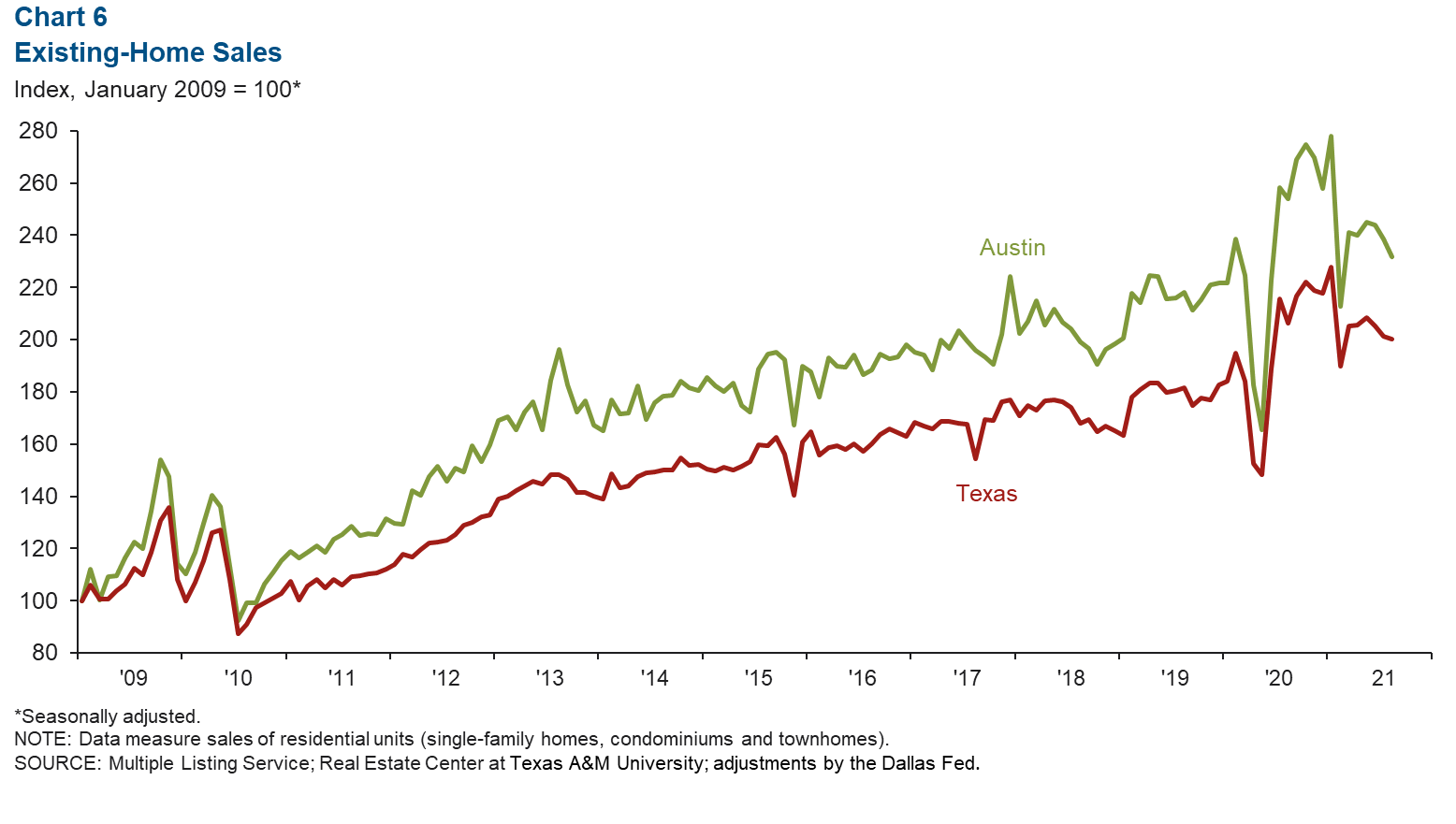Austin Economic Indicators

October 7, 2021
The Austin economy continued to expand in August. The Austin Business-Cycle Index increased, led by declines in the unemployment rate. Recent COVID-19 hospitalizations declined further from the latest peak in August. Existing-home sales fell in August for the third consecutive month, and regional consumer spending remained healthy.
Business-Cycle Index
The Austin Business-Cycle Index—a broad measure of economic activity—increased an annualized 5.0 percent in August after expanding a robust 20.3 percent in July (Chart 1). Recent strength in the economy can be attributed to unemployment rate declines and job gains.

Labor Market
Unemployment Rate Declines
Austin’s unemployment rate continued to fall in August to 3.8 percent, the lowest level since March 2020 (Chart 2). This is well below the state’s jobless rate of 5.9 percent and the nation’s rate of 5.2 percent.

Recent Job Growth Positive in Most Sectors
Austin payrolls expanded an annualized 7.5 percent, or by 20,700 net jobs, in the three months ending in August (Chart 3). Health and private education services led job growth (16.4 percent, or 5,010 jobs), followed by leisure and hospitality (13.5 percent, or 3,650 jobs), and professional and business services (10.0 percent, or 5,450 jobs). The only sectors that posted net job losses were construction and mining (-3.1 percent, or 560 jobs), and manufacturing (-3.3 percent, or 530 jobs).

Consumer Spending
Strength in consumer spending in Austin has continued in recent weeks and reached a record high during Labor Day weekend. In the metro’s most-populous county, Travis, credit and debit card spending has consistently surpassed January 2020 levels since last July, except for a dip in late November 2020 and during Winter Storm Uri in mid-February this year. As of Sept. 5, 2021, spending in the county was up a robust 47.7 percent relative to January 2020. As of Sept. 26, spending in Texas was up 19.1 percent (Chart 4).

COVID-19 Statistics
The number of people currently hospitalized with COVID-19 in Austin has continued to decline since its recent peak in mid-September (Chart 5). As of Oct. 4, 383 people were hospitalized in Austin and 8,407 in Texas—well below the state peak in late August.

Real Estate
Existing-home sales in Austin fell 3.0 percent in August after contracting 2.1 percent in July and 0.1 percent in June (Chart 6). This compares with a 0.6 percent decrease in the state in August (and -1.9 percent in July and -1.6 percent in June). Nonetheless, in the first eight months of the year, metro home sales were up 9.2 percent relative to the same period in 2020. At the state level, sales were up 11.5 percent for that period. In August, the median price of homes sold was $464,593 in the metro, a 28.1 percent rise year over year, compared with $304,668 in Texas—an 11.2 percent increase.

NOTE: Data may not match previously published numbers due to revisions.
About Austin Economic Indicators
Questions can be addressed to Judy Teng at judy.teng@dal.frb.org. Austin Economic Indicators is released on the first Thursday of every month.